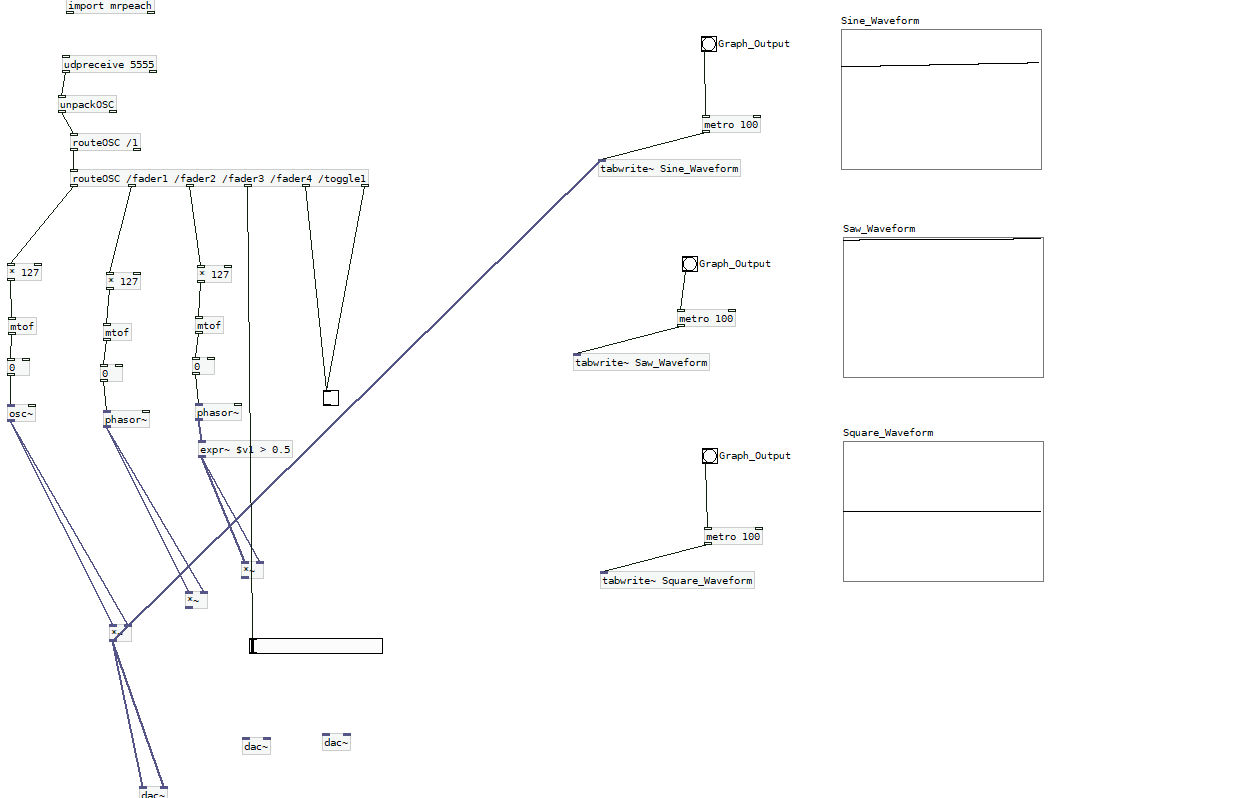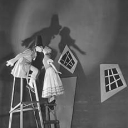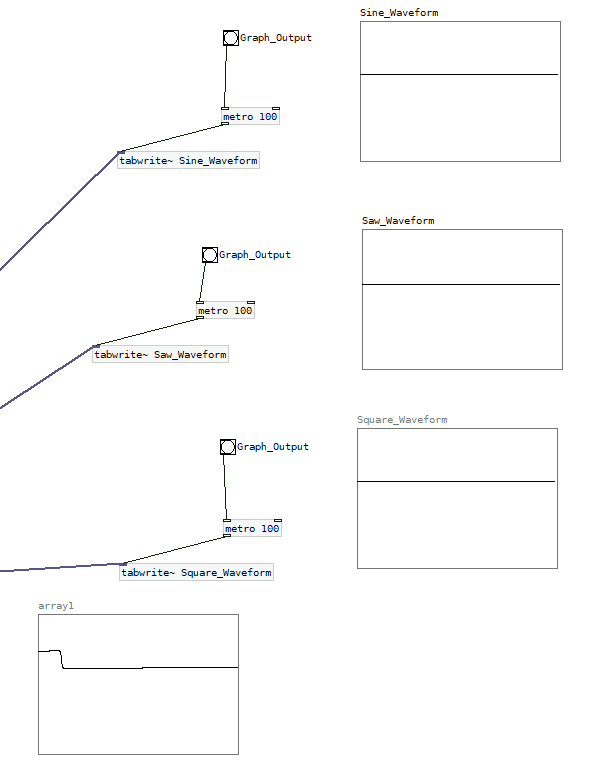@JackCrescent Not sure about finding the project folder. Try doing a "saveas" from the pd menu. The OS tree box that pops up should show you where Pd is trying to save the patch..... hopefully the same place as it was last saved to.
The graphs will jump if the [metro] is not in sync with the [osc~]..... difficult to achieve especially with incoming midi notes (you could reset the phase of [osc~] as the metro bangs but that will cause clicks in the output of [osc~]......
And if you are reading from the arrays they need to be a complete waveform so that the first level in the graph is the same as the last.
Otherwise the signal jumps as the reader wraps back to the beginning.... which causes a click (they will probably sound like a buzz..... or "motor exhaust sound" as they arrive so rapidly).
That means the length of the array (the number of points) needs to be correct for a complete waveform.
It should be a better idea to construct the waveforms only once....... and then read them at different speeds (adjusted for the midi note) using [phasor~] connected to [tabread~] or better still [tabread4~].
There is a very good guide here...... http://write.flossmanuals.net/pure-data/generating-waveforms/ that uses [tabread4~] for interpolation...
It also shows (but doesn't explain unfortunately) the maths necessary for the interpolation (in fact the length of the array... 2051... is 2048 samples.... a good multiple of 64 that contains enough data points for a fairly smooth wave..... plus 3 for the interpolation as [tabread4~] is reading 4 samples at a time and "smoothing" the samples even when the [phasor~] is wrapping around the end of the array).
And it shows how the playback speed is controlled by midi note input.
You should look at the help files for the objects (right-click them for "help") [osc~] [phasor~] and [tabread4~] and then google the terms you don't understand.
Pd itself is quite easy to understand but digital audio requires some basic knowledge or it looks like fairy dust.......
Welcome to the forum!
David.




